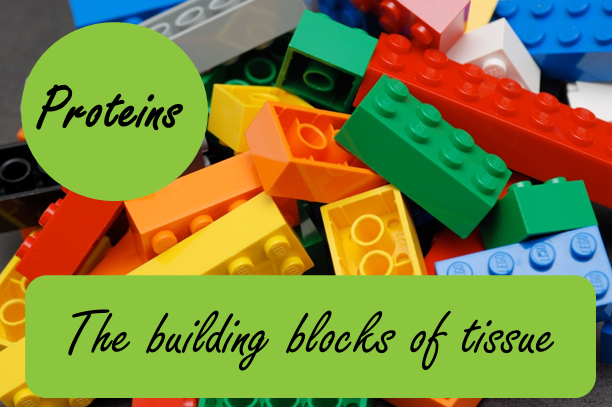


Middle and right panels depict confocal and cryo-SEM Water-in-oil lysozyme-based microgels and oil-in-water microgels, Thisįigure is adapted with permission from, ref (48), Copyright 2019, Wiley-VCH. Of yarn-like fibers generated through microfluidic spinning. Right panels show the SEM image (left) and fluorescent image (right) Stained with Thioflavin T to visualize the protein fibrils (right). Image of the hydrogel fiber (left) and the confocal image of a fiber (d) Microfluidic device was used to generate fibers with aligned The figure isĪdapted with permission from ref (122), Copyright 2008, National Academy of Sciences, Image shows birefringence in the microfiber (bottom).

Microfluidic spinning of recombinant silk protein resulted in alignedĪnd β-sheet rich fibers. With permission from ref (119), Copyright 2015, American Chemical Society (right).
#Building blocks of proteins license#
The figure is adapted with permissions underĬreative Commons CC BY license from ref (120), Copyright 2016, Oxford University Press (left) The proteins undergo conformationalĬhanges during extrusion. (b) Fibronectin fibers were generated by extrusion The figure is adapted with permission from ref (27), Copyright 2011, AmericanĬhemical Society. (a) Amyloid fibrilsįrom lysozyme assembled into microfibers using the wet-spinning technique.Īn oppositely charged polysaccharide was used to generate hydrogelįibers. (d) Nanofibrils’ formation is a result of protein molecule With permissions from ref (42), Copyright 2014, Springer Nature ref (43), Copyright 2014, Wiley-VCH. (c) Nanoscale fibrils containingĪntiparallel and parallel β-sheets are the building blocks of The figure is adapted with permissions fromĢ008, Wiley-VCH ref (16), Copyright 2019, Springer Nature. The examples include drop casting,ģD printing, microfluidics, and ultrasonication. (b) Methods that can direct the assembly of theīuilding blocks into materials. With permissions from ref (2), Copyright 2017 Wiley-VCH ref (5), ref (38), Copyright 20, Springer Nature ref (39) ref (40), Copyright 2015, AmericanĬhemical Society. In sarcoma (FUS) protein condensates, whey protein fibrillar fibers, andĬyro-scanning electron microscopy (SEM) image of a lysozyme fibrillar Represent BLG fibrillar hydrogel, lysozymeįibrillar film, a fiber formed from fused (a) Protein molecules can form bulk gels, films, fibers, and microgels. We finally discuss opportunities and challenges for this class of materials, including applications that can be involved in this material system which consists of fully natural, biocompatible, and biodegradable feedstocks yet has the potential to generate materials with performance and versatility rivalling that of the best synthetic polymers.īiomaterial condensate drug delivery fiber film gel microfluidic protein self-assembly.įrom the molecular level to functional materials. We review current and emerging approaches to process and assemble these building blocks in a manner which is different to their natural evolutionarily selected role but allows the generation of tailored functionality, with a focus on microfluidic approaches.

In this Review, we focus on the multiscale assembly of such protein nanofibrils formed from naturally occurring proteins into new supramolecular architectures and discuss how they can form the basis of material systems ranging from bulk gels, films, fibers, micro/nanogels, condensates, and active materials. Protein nanofibrils are a fundamental supramolecular unit from which many macroscopic protein materials are formed. Attention is increasingly turning to this versatile class of molecules for the synthesis of next-generation green functional materials for a range of applications. Such materials fulfill structural roles, as in the case of silk and collagen, and can generate active structures including the cytoskeleton. Proteins are the fundamental building blocks for high-performance materials in nature.


 0 kommentar(er)
0 kommentar(er)
